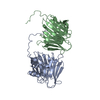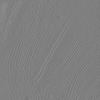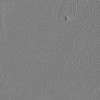+ Open data
Open data
- Basic information
Basic information
| Entry |  | |||||||||
|---|---|---|---|---|---|---|---|---|---|---|
| Title | Tomogram of P. tricornutum pyrenoid | |||||||||
 Map data Map data | ||||||||||
 Sample Sample |
| |||||||||
 Keywords Keywords | marine diatoms / chloroplast / pyrenoid / photosynthesis / carbon fixation / rubisco | |||||||||
| Biological species |  Thalassiosira pseudonana (Diatom) Thalassiosira pseudonana (Diatom) | |||||||||
| Method | electron tomography / cryo EM | |||||||||
 Authors Authors | Demulder M / Righetto RD / Wietrzynski W / Lamm L / Engel BD | |||||||||
| Funding support | European Union, 1 items
| |||||||||
 Citation Citation |  Journal: Cell / Year: 2024 Journal: Cell / Year: 2024Title: Diatom pyrenoids are encased in a protein shell that enables efficient CO fixation. Authors: Ginga Shimakawa / Manon Demulder / Serena Flori / Akihiro Kawamoto / Yoshinori Tsuji / Hermanus Nawaly / Atsuko Tanaka / Rei Tohda / Tadayoshi Ota / Hiroaki Matsui / Natsumi Morishima / ...Authors: Ginga Shimakawa / Manon Demulder / Serena Flori / Akihiro Kawamoto / Yoshinori Tsuji / Hermanus Nawaly / Atsuko Tanaka / Rei Tohda / Tadayoshi Ota / Hiroaki Matsui / Natsumi Morishima / Ryosuke Okubo / Wojciech Wietrzynski / Lorenz Lamm / Ricardo D Righetto / Clarisse Uwizeye / Benoit Gallet / Pierre-Henri Jouneau / Christoph Gerle / Genji Kurisu / Giovanni Finazzi / Benjamin D Engel / Yusuke Matsuda /     Abstract: Pyrenoids are subcompartments of algal chloroplasts that increase the efficiency of Rubisco-driven CO fixation. Diatoms fix up to 20% of global CO, but their pyrenoids remain poorly characterized. ...Pyrenoids are subcompartments of algal chloroplasts that increase the efficiency of Rubisco-driven CO fixation. Diatoms fix up to 20% of global CO, but their pyrenoids remain poorly characterized. Here, we used in vivo photo-crosslinking to identify pyrenoid shell (PyShell) proteins, which we localized to the pyrenoid periphery of model pennate and centric diatoms, Phaeodactylum tricornutum and Thalassiosira pseudonana. In situ cryo-electron tomography revealed that pyrenoids of both diatom species are encased in a lattice-like protein sheath. Single-particle cryo-EM yielded a 2.4-Å-resolution structure of an in vitro TpPyShell1 lattice, which showed how protein subunits interlock. T. pseudonana TpPyShell1/2 knockout mutants had no PyShell sheath, altered pyrenoid morphology, and a high-CO requiring phenotype, with reduced photosynthetic efficiency and impaired growth under standard atmospheric conditions. The structure and function of the diatom PyShell provide a molecular view of how CO is assimilated in the ocean, a critical ecosystem undergoing rapid change. | |||||||||
| History |
|
- Structure visualization
Structure visualization
| Supplemental images |
|---|
- Downloads & links
Downloads & links
-EMDB archive
| Map data |  emd_18710.map.gz emd_18710.map.gz | 1.5 GB |  EMDB map data format EMDB map data format | |
|---|---|---|---|---|
| Header (meta data) |  emd-18710-v30.xml emd-18710-v30.xml emd-18710.xml emd-18710.xml | 10.8 KB 10.8 KB | Display Display |  EMDB header EMDB header |
| Images |  emd_18710.png emd_18710.png | 31 KB | ||
| Filedesc metadata |  emd-18710.cif.gz emd-18710.cif.gz | 3.7 KB | ||
| Others |  emd_18710_additional_1.map.gz emd_18710_additional_1.map.gz | 355.6 MB | ||
| Archive directory |  http://ftp.pdbj.org/pub/emdb/structures/EMD-18710 http://ftp.pdbj.org/pub/emdb/structures/EMD-18710 ftp://ftp.pdbj.org/pub/emdb/structures/EMD-18710 ftp://ftp.pdbj.org/pub/emdb/structures/EMD-18710 | HTTPS FTP |
-Validation report
| Summary document |  emd_18710_validation.pdf.gz emd_18710_validation.pdf.gz | 699 KB | Display |  EMDB validaton report EMDB validaton report |
|---|---|---|---|---|
| Full document |  emd_18710_full_validation.pdf.gz emd_18710_full_validation.pdf.gz | 698.5 KB | Display | |
| Data in XML |  emd_18710_validation.xml.gz emd_18710_validation.xml.gz | 4.8 KB | Display | |
| Data in CIF |  emd_18710_validation.cif.gz emd_18710_validation.cif.gz | 5.4 KB | Display | |
| Arichive directory |  https://ftp.pdbj.org/pub/emdb/validation_reports/EMD-18710 https://ftp.pdbj.org/pub/emdb/validation_reports/EMD-18710 ftp://ftp.pdbj.org/pub/emdb/validation_reports/EMD-18710 ftp://ftp.pdbj.org/pub/emdb/validation_reports/EMD-18710 | HTTPS FTP |
-Related structure data
- Links
Links
| EMDB pages |  EMDB (EBI/PDBe) / EMDB (EBI/PDBe) /  EMDataResource EMDataResource |
|---|
- Map
Map
| File |  Download / File: emd_18710.map.gz / Format: CCP4 / Size: 1.6 GB / Type: IMAGE STORED AS FLOATING POINT NUMBER (4 BYTES) Download / File: emd_18710.map.gz / Format: CCP4 / Size: 1.6 GB / Type: IMAGE STORED AS FLOATING POINT NUMBER (4 BYTES) | ||||||||||||||||||||||||||||||||
|---|---|---|---|---|---|---|---|---|---|---|---|---|---|---|---|---|---|---|---|---|---|---|---|---|---|---|---|---|---|---|---|---|---|
| Projections & slices | Image control
Images are generated by Spider. generated in cubic-lattice coordinate | ||||||||||||||||||||||||||||||||
| Voxel size | X=Y=Z: 14.08 Å | ||||||||||||||||||||||||||||||||
| Density |
| ||||||||||||||||||||||||||||||||
| Symmetry | Space group: 1 | ||||||||||||||||||||||||||||||||
| Details | EMDB XML:
|
-Supplemental data
-Additional map: #1
| File | emd_18710_additional_1.map | ||||||||||||
|---|---|---|---|---|---|---|---|---|---|---|---|---|---|
| Projections & Slices |
| ||||||||||||
| Density Histograms |
- Sample components
Sample components
-Entire : T. pseudonana
| Entire | Name:  T. pseudonana (Diatom) T. pseudonana (Diatom) |
|---|---|
| Components |
|
-Supramolecule #1: T. pseudonana
| Supramolecule | Name: T. pseudonana / type: cell / ID: 1 / Parent: 0 / Details: Pyrenoid in T. pseudonana chloroplast |
|---|---|
| Source (natural) | Organism:  Thalassiosira pseudonana (Diatom) Thalassiosira pseudonana (Diatom) |
-Experimental details
-Structure determination
| Method | cryo EM |
|---|---|
 Processing Processing | electron tomography |
| Aggregation state | cell |
- Sample preparation
Sample preparation
| Buffer | pH: 7 |
|---|---|
| Vitrification | Cryogen name: ETHANE |
| Sectioning | Focused ion beam - Instrument: OTHER / Focused ion beam - Ion: OTHER / Focused ion beam - Voltage: 3 / Focused ion beam - Current: 0.03 / Focused ion beam - Duration: 600 / Focused ion beam - Temperature: 83 K / Focused ion beam - Initial thickness: 1000 / Focused ion beam - Final thickness: 150 Focused ion beam - Details: The value given for _em_focused_ion_beam.instrument is FEI Aquilos II. This is not in a list of allowed values {'OTHER', 'DB235'} so OTHER is written into the XML file. |
- Electron microscopy
Electron microscopy
| Microscope | FEI TITAN KRIOS |
|---|---|
| Image recording | Film or detector model: FEI FALCON II (4k x 4k) / Detector mode: COUNTING / Average electron dose: 2.0 e/Å2 |
| Electron beam | Acceleration voltage: 300 kV / Electron source:  FIELD EMISSION GUN FIELD EMISSION GUN |
| Electron optics | Illumination mode: FLOOD BEAM / Imaging mode: BRIGHT FIELD / Nominal defocus max: 3.5 µm / Nominal defocus min: 3.5 µm |
| Experimental equipment |  Model: Titan Krios / Image courtesy: FEI Company |
- Image processing
Image processing
| Final reconstruction | Number images used: 53 |
|---|
 Movie
Movie Controller
Controller











 Z (Sec.)
Z (Sec.) Y (Row.)
Y (Row.) X (Col.)
X (Col.)
























